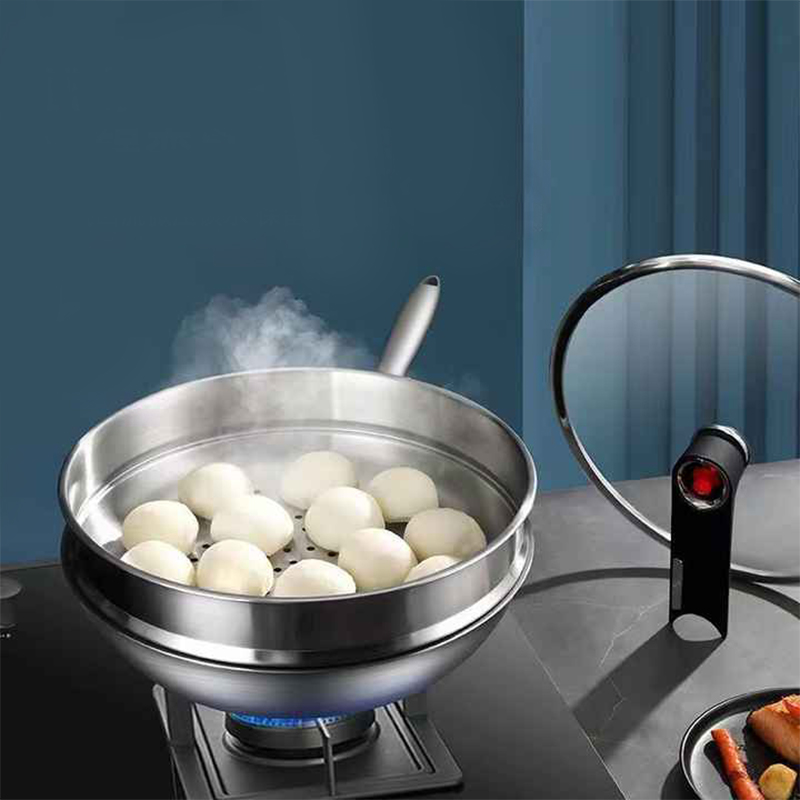2025-09-05
Rising Interest in Uncoated Cookware
Uncoated Cookware is attracting increasing attention in both household kitchens and professional culinary environments. Its straightforward design and natural cooking surface allow users to prepare meals without synthetic coatings, appealing to those who prefer traditional cooking tools. The durability of these products also supports long-term use, which makes them relevant for both domestic and commercial applications.
Role of Cookware Factory in Production
Modern Cookware Factory operations have played a significant role in expanding the reach of Uncoated Cookware. Factories are experimenting with a variety of metals and production methods to enhance strength and heat distribution. Investments in machinery allow factories to shape cookware more efficiently, enabling broader product ranges to be delivered to global markets. These manufacturing developments also ensure that Uncoated Cookware continues to compete alongside alternatives such as Die-Cast Aluminum Cookware and Non-Stick Kitchen Pans.
Comparison with Die-Cast Aluminum Cookware
The market presence of Die-Cast Aluminum Cookware provides an interesting contrast to Uncoated Cookware. While aluminum models emphasize lightweight handling and quick heating, uncoated designs often highlight stability and resistance to surface wear. Both categories fulfill different culinary needs, which allows consumers to choose according to personal cooking habits. Manufacturers are increasingly presenting these options side by side, offering flexibility in how households or restaurants approach meal preparation.

Traditional Value of Iron Pots and Pans
Iron Pots and Pans remain a central reference point when discussing Uncoated Cookware. Known for their ability to retain heat and deliver consistent cooking performance, iron-based models are closely linked to the heritage of traditional kitchens. Many users regard them as essential tools for dishes that require steady temperatures and robust flavors. The connection between Uncoated Cookware and iron products highlights a continuation of historical cooking practices in a modern setting.
Position of Non-Stick Kitchen Pans
Non-Stick Kitchen Pans represent another comparison point in this evolving cookware market. Their convenience and easy cleaning are valued by many households, yet the absence of coatings in Uncoated Cookware presents a distinct alternative. Some consumers prefer the seasoning process associated with uncoated surfaces, as it creates a natural layer of protection and enhances the cooking experience over time. This difference illustrates how cookware design reflects varied user priorities.
Industry Adjustments and Market Response
Producers and retailers are observing growing interest in cookware that emphasizes material authenticity. Cookware Factory operations are responding by refining metal casting, polishing, and finishing processes to improve consistency in uncoated surfaces. Market studies suggest that consumers are balancing convenience with tradition, leading to parallel demand for both coated and uncoated models. In this way, Uncoated Cookware has found a firm position within a diverse product spectrum.
Culinary and Cultural Dimensions
Uncoated Cookware is not only a functional tool but also a reflection of cultural traditions. In many regions, dishes prepared with iron or steel pans are tied to local heritage. The act of cooking with such materials can connect families to long-standing methods of food preparation. This cultural value adds another dimension to its appeal, showing that Uncoated Cookware serves both practical and symbolic purposes in kitchens around the world.
Conclusion
The presence of Uncoated Cookware in modern markets demonstrates the balance between durability, tradition, and consumer choice. For households, restaurants, and professional chefs, Uncoated Cookware offers both a return to authentic materials and a reliable partner in daily meal preparation.